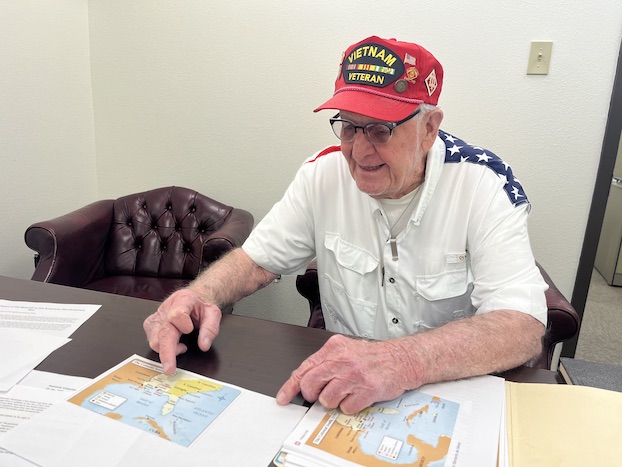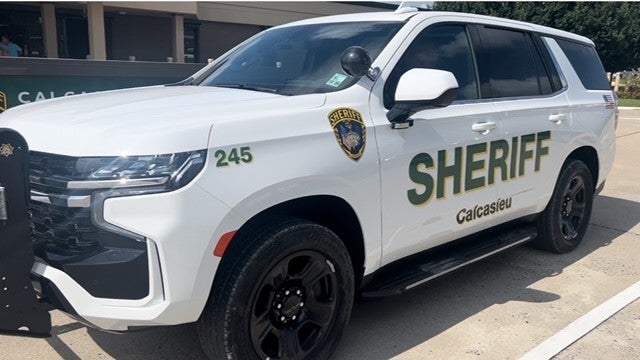Church of famed ‘Brownsville Revival’ struggles
Published 8:50 am Friday, March 30, 2012
PENSACOLA, Fla. (AP) — For years starting in the mid-1990s, millions from around the globe visited a humble church in Florida’s Panhandle for lively Pentecostal revival services where believers flocked on stage to be healed by God for cancer, addiction and broken hearts.
At its height, the “Brownsville Revival” drew as many as 5,500 people a night for six years — estimates put the total between 2.5 million and 4.5 million people. Donations poured in as the Brownsville Assembly of God added staff, built a massive new sanctuary and opened a school for preachers.
In the decade after being the home of the largest Pentecostal outpouring in U.S. history, the church has been on the edge of financial ruin. It racked up $11.5 million in debt, to be paid after the out-of-town throngs and its former pastor moved on.
The red ink is mostly unknown outside the congregation.
“Every Monday I find out what the (Sunday) offering was and we decide what we can pay this week,” said the Rev. Evon Horton, Brownsville’s current pastor. “The good news is last week we paid our mortgage. The bad news is it drained our bank accounts.”
The paid staff is down to six from around 50, and the newsletter is printed monthly instead of weekly. About 800 to 1,000 worshippers total attend two Sunday services, but most pews go empty in the 2,200-seat sanctuary. Another 2,600-seat sanctuary built just for the revival is used for a gym, community classes and storage. The church has trimmed millions off its debt by selling property and slashing expenses, and it’s raising money to pay off the remaining $6.5 million.
Horton said it’s a wonder — a blessing from God, really — that the church has survived so long.
“It’s the hardest thing I’ve ever dealt with in 30 years of ministry,” he said.
Almost three years after the revival trickled down to its last nightly service in 2001, the longtime former pastor, the Rev. John Kilpatrick, moved on. He now runs a bustling church and traveling revival ministry based across the state line in Daphne, Ala.
Kilpatrick said Brownsville was never the wealthy church many assumed during the revival years, so loans were the only way to pay for growth. He said the church fell deeper into debt after he departed and membership dropped.
“I resigned (from) the church, and I never would have left if I knew the struggles it was going to have,” he said.
A lot has changed since the revival’s beginning on Father’s Day 1995. Ken Griffin, who first came to the church 36 years ago as a surfer and is now a board member, still marvels at what happened that day. Kilpatrick brought in visiting evangelist Steve Hill and something stirred.
“He just asked a simple question, like ‘If anyone really wants to get refreshed and get closer to God, then come up to the altar,'” Griffin said. “As he started praying for people, all kinds of things started happening. … People were falling out and people were just getting ministered to, and the next thing we know it’s 4 o’clock in the afternoon.”
Word spread of people being miraculously healed and converted, and revival services were soon held four and five nights a week. People waited in long lines to get inside the church, located in one of the poorest neighborhoods in Pensacola, a Gulf Coast city known for training naval aviators.
The church began buying up nearby houses and razing them for parking, Horton said. It took in millions in donations and revenue from items like music CDs, but the church used mortgages to expand rather than cash.
“You’d think that money was just flowing into the place,” Kilpatrick said. “But it wasn’t.”
The Pensacola News-Journal raised questions at the time about the revival’s finances and claims of miraculous healings, but the crowds kept coming.
Horton said he’s still unsure what happened to all the money, but he’s concentrating on the future. “What good would it do me?” he asked.
Kilpatrick said he doesn’t recall the financial details, but he’s saddened by his old church’s struggles.
“Many times when a pastor leaves churches begin to get into a struggle,” he said. “That’s what happened at Brownsville. I just hate for them that it happened.”
Kilpatrick went on to found the Church of His Presence in Daphne, about 50 west of Pensacola. In 2010, he began the “Bay Revival” with another traveling evangelist, Nathan Morris.
Records from the Evangelical Council for Financial Accountability show John Kilpatrick Ministries is a subsidiary of Partners in Revival Ministries, which he founded in 1996 during the Brownsville Revival. The organization listed net assets of $1.4 million in 2010, but it ran a $40,000 deficit that year, with revenues of $941,588 and expenses of $981,588.
Kilpatrick is trying to grow his current ministry. In a February talk posted on his church’s website, Kilpatrick asked for extra money to pay a $9,000 deficit from a recent revival in Orlando; to purchase a second TV production truck for $250,000; and to help the church pay its bills. He also lamented the cost of maintaining two homes near the Alabama coast, which tax records show are worth about $1 million total.
Speaking directly into the camera, Kilpatrick said: “You know we’re not a money people; I’ve never been a money grubber. Never asked for money. I don’t even like taking offerings. I’ll ask for pastors to ask for offerings when we go out. I don’t like to take ’em. I don’t even like to talk about ’em. This is killing me for me to have to talk about this right now, but I have to do it. ‘Cause we’ve gotta get this message out to the world.”
The problems at Brownsville look familiar to Howard Snyder, a professor at Tyndale Seminary in Toronto who has studied revivals. When the dust settles after a spirited revival, churches can be left with divisions and no long-term plan.
“Revivals may produce rapid growth,” he wrote in an email. “But new converts or adherents need teaching, discipling, spiritual formation over time, and often the church’s leadership fails to understand this and provide for it. So very easily, ‘what goes up comes back down.'”
Back at Brownsville, remaining parishioners are embracing a new calling to pay off their debt and minister to the impoverished community around them.
“This revival touched the world but not this community,” Horton said.
In a fundraising effort that Horton said came to him from God in a dream, the church is trying to raise about $7 million by getting people to give $1,000 each for debt relief. Donors’ names will be engraved in a “walk of faith” around the old sanctuary.
“We can be debt-free if just 7,000 of the millions of people who attended the revival help out,” Horton said.
Robert Helms Jr., a church volunteer and retired Navy aviator, said the church is trying to move ahead without bitterness.
He directs a community center located in the old overflow sanctuary, where pews now hold old lamps destined for Habitat for Humanity homes. They offer day care, GED classes, youth basketball games, women’s self-defense and computer training for the neighborhood.
“We need to stop worrying about the debt, and we’ve kind of put that on the back burner,” Helms said. “We’ve said we want to reach this community, and the Lord has graciously given us all these people. Now, the question (from God) is ‘What are you going to do with them?'”
—
Online:
Brownsville Assembly of God: http://brownsvilleag.org/
Church of His Presence: http://www.churchofhispresence.org/
Bay Revival: http://bayrevival.org/
In this March 25
2012
photo
churchgoers at the Brownsville Assembly raise their hands in praise as senior pastor Rev. Evon Horton preaches to his congregation during service in Pensacola
Fla. The church that was home to the largest Pentecostal outpouring in U.S. history is on the edge of financial ruin. The revival that drew some 5
500 people nightly at its height saddled the congregation with an $11.5 million debt that members were left to pay off after both the out-of-town throngs and former Rev. John Kilpatrick moved on. The red ink is mostly unknown outside the congregation. (AP Photo/John David Mercer)
In this March 25
2012
photo
Brownsville Assembly senior pastor Rev. Evon Horton preaches to his congregation in Pensacola
Fla. The church that was home to the largest Pentecostal outpouring in U.S. history is on the edge of financial ruin. The revival that drew some 5
500 people nightly at its height saddled the congregation with an $11.5 million debt that members were left to pay off after both the out-of-town throngs and former Rev. John Kilpatrick moved on. The red ink is mostly unknown outside the congregation. (AP Photo/John David Mercer)
In this March 25
2012
photo
Brownsville Assembly churchgoers enter the Brownsville Community Center in Pensacola
Fla. The church that was home to the largest Pentecostal outpouring in U.S. history is on the edge of financial ruin. The revival that drew some 5





